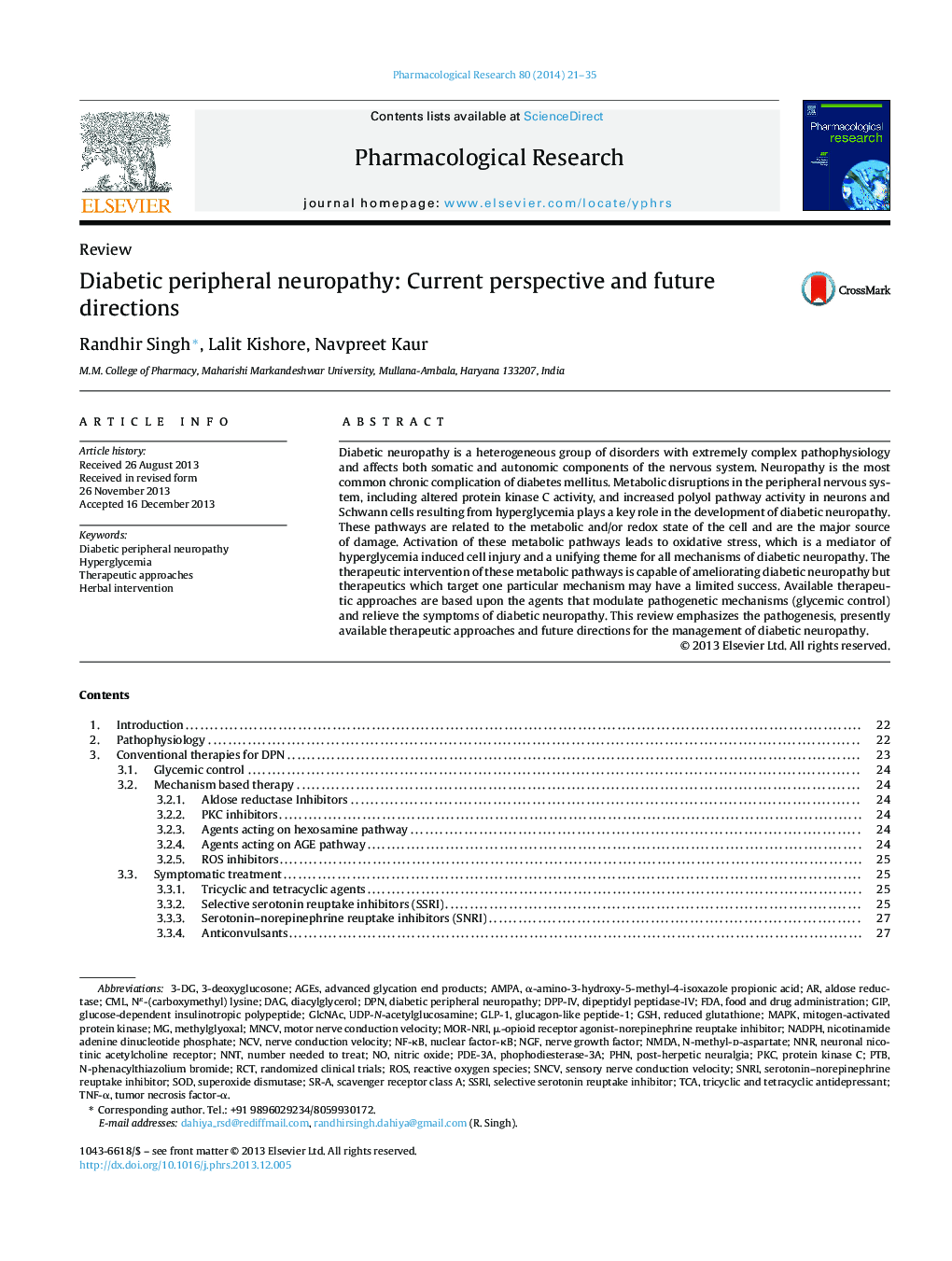| Article ID | Journal | Published Year | Pages | File Type |
|---|---|---|---|---|
| 2561984 | Pharmacological Research | 2014 | 15 Pages |
Diabetic neuropathy is a heterogeneous group of disorders with extremely complex pathophysiology and affects both somatic and autonomic components of the nervous system. Neuropathy is the most common chronic complication of diabetes mellitus. Metabolic disruptions in the peripheral nervous system, including altered protein kinase C activity, and increased polyol pathway activity in neurons and Schwann cells resulting from hyperglycemia plays a key role in the development of diabetic neuropathy. These pathways are related to the metabolic and/or redox state of the cell and are the major source of damage. Activation of these metabolic pathways leads to oxidative stress, which is a mediator of hyperglycemia induced cell injury and a unifying theme for all mechanisms of diabetic neuropathy. The therapeutic intervention of these metabolic pathways is capable of ameliorating diabetic neuropathy but therapeutics which target one particular mechanism may have a limited success. Available therapeutic approaches are based upon the agents that modulate pathogenetic mechanisms (glycemic control) and relieve the symptoms of diabetic neuropathy. This review emphasizes the pathogenesis, presently available therapeutic approaches and future directions for the management of diabetic neuropathy.
Graphical abstractFigure optionsDownload full-size imageDownload high-quality image (183 K)Download as PowerPoint slide
